Discover 9 hidden attractions, cool sights, and unusual things to do in Bryansk (Russia). Don't miss out on these must-see attractions: Svensky Monastery, Plosad Karla Marksa, and A. K. Tolstoy Bryansk Oblast Drama Theatre. Also, be sure to include Teatr unogo zritela in your itinerary.
Below, you can find the list of the most amazing places you should visit in Bryansk (Bryansk).
Table of Contents
Svensky Monastery
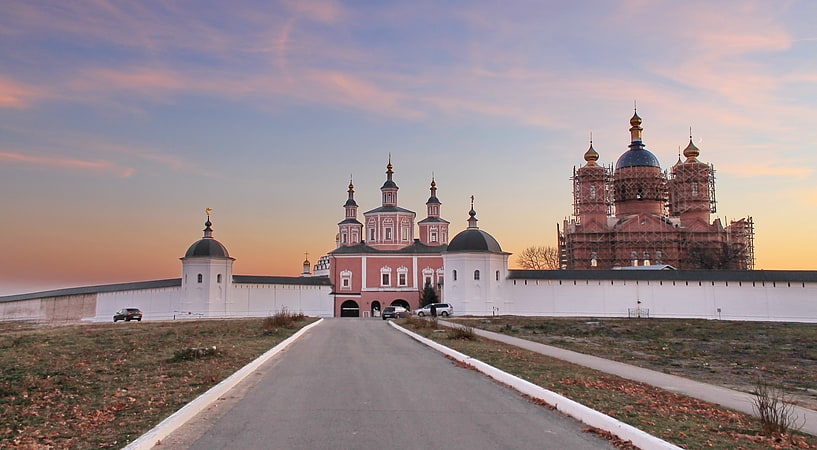
Also known as: Свенский монастырь
Monastery in Suponevo, Russia. Svensky Monastery is a Russian Orthodox monastery located at the confluence of the Desna and Sven Rivers, three miles from Bryansk, Russia. The monastery was originally known as Svinsky, after the Svin River, but the spelling was subsequently changed to Svensky, because "svinsky" also means "of the swine" in Russian.
Church legends attribute the monastery's foundation to Prince Roman of Bryansk, who was reportedly buried there. As the legend has it, the monastery was founded to mark the place where a miraculous icon of the Theotokos appeared to Roman, the second son of St. Mikhail of Chernigov, and cured him of blindness. A tree where it was found, was chopped down to be used for icon painting.
The miraculous icon represents the Theotokos Panachrantos with SS. Anthony and Theodosius. It is popularly attributed to the most celebrated icon-painter of Kievan Rus, St. Alypius from the Kiev Pechersk Monastery. Nikodim Kondakov supposed that the icon was modeled on a mosaic from the central conch of the Assumption Cathedral in the Pechersk Monastery.
In the 16th century, the monastery was repeatedly sacked by the Crimean Tatars. After one such raid, Ivan the Terrible donated funds sufficient to build a cathedral of five domes, a refectory church, and a belltower. The cathedral doors of rare craftsmanship were endowed by Prince Ivan Mstislavsky. The church of SS. Anthony and Theodosius was started on 19 May 1566; its vaults suffered a collapse a year later but were restored.
After Russia gained the Left-bank Ukraine by the Treaty of Andrusovo, the liveliest fair in the region was held annually underneath the walls of the Svensky Monastery. Its ties with the Kiev Pechersk Lavra were so close that in 1682 the Svensky Monastery was transformed into a branch of the lavra, its name changed from Svensky to New Pechersk monastery.
During this period of Ukrainian domination, Cossack Baroque was liberally applied to its buildings. The Presentation Church, rising in three towers above the main entrance to the abbey, was erected in the late 1680s in the simplified Ukrainian Baroque style. The main cathedral was rebuilt in the Baroque style in 1715. The ancient clocktower was built up to the height of 42 meters. The Saviour Church over the fair gates was constructed in five levels, ringed by a gallery, in 1742. The walls of the monastery were erected between 1749 and 1769.
On 30 July 1749 work started on the new cathedral, which was to be modeled on the New Cathedral of the Donskoi Monastery in Moscow. It is believed that its design was commissioned from Ivan Fyodorovich Michurin, who had supervised construction of St Andrew's Church of Kiev. The cathedral of the Svensky Monastery was reminiscent of another structure ascribed to Michurin — St. Clement's Church in Zamoskvorechye. A seven-tier Baroque iconostasis from the old cathedral was carefully preserved and assembled in the new structure before it was consecrated in 1758.
There was no new construction in the monastery after that. In the 19th century, the cloister declined, especially after the fair had been moved to Bryansk in 1864. A garden of cedars, chestnuts, and cherry-trees was planted to mark its historical location. The Bolsheviks closed the monastery in 1926. Its valuables were expropriated, while the miraculous icon of the Theotokos was given to the Tretyakov Gallery. Michurin's cathedral was blown up; the Church of SS. Anthony and Theodosius (the oldest in the complex) reduced to rubble; the house where Peter the Great stayed before the Battle of Poltava torn down. It was not until the late 1980s that conservation works on the remaining structures started. The monks were readmitted into the monastery in 1992.[1]
Address: Moskovskaya, 189B, 241520 Suponevo
Plosad Karla Marksa
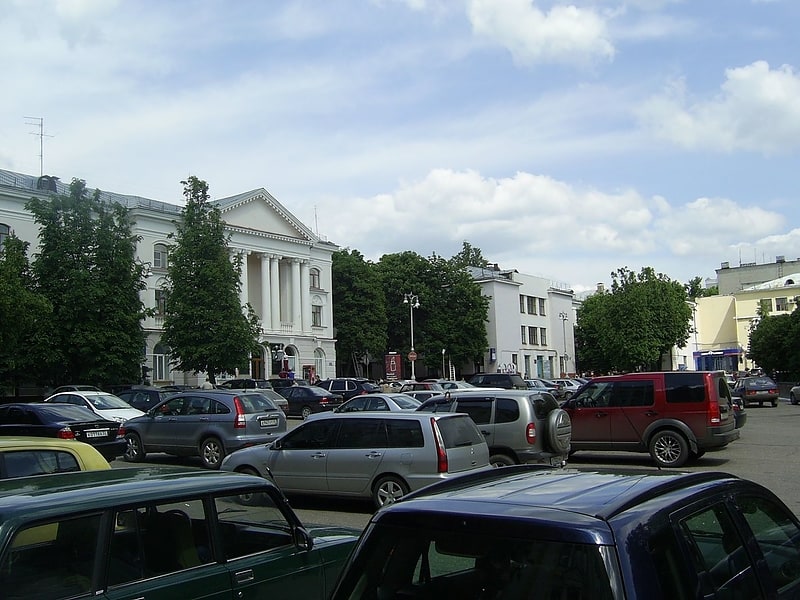
Karla Marksa Square is one of the oldest squares in Bryansk. It is located in the elevated part of the historic center of the city, at the intersection of Gagarin Boulevard and Karl Marx Street. It has a square shape with a side of about 160 m, turned in accordance with the planning of the city at 36 ° in relation to the cardinal points. The relief of the square is flat, with a slight overall slope from northwest to southeast.
The square has no transport significance and is traditionally a place of mass festivities (New Year and Shrovetide festivities, some fairs - for example, honey), and is also used for rallies, pickets and similar events of the political opposition (mainly the Communist Party) and trade unions, despite attempts to ban them by the authorities.
The central part of the square is occupied by the Round Square, somewhat displaced along the longitudinal axis of the square to the southeast.
Address: Площадь Карла Маркса, Bryansk
A. K. Tolstoy Bryansk Oblast Drama Theatre
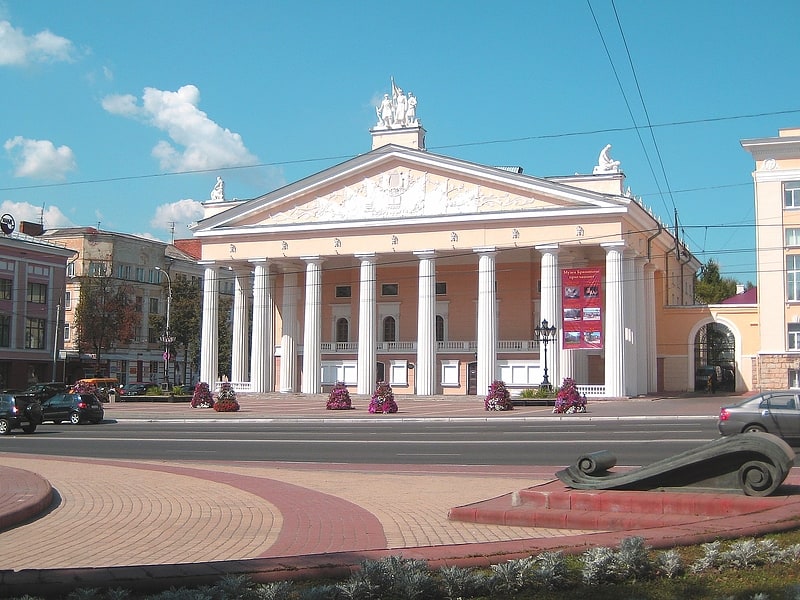
The Bryansk Tolstoy Regional Drama Theater is a drama theater in Bryansk, the oldest theater in the Bryansk region, founded in 1926.
Address: 26 улица Фокина, Bryansk
Teatr unogo zritela
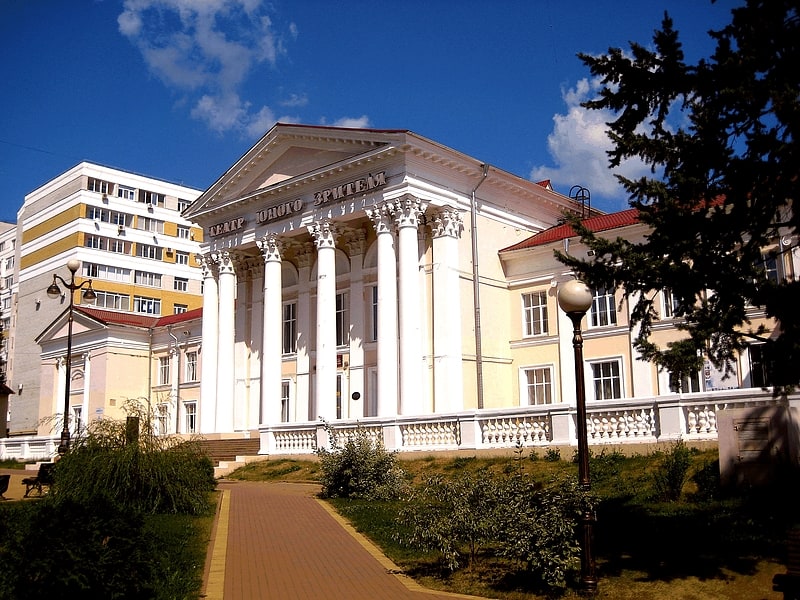
The Bryansk Regional Theater of Young Spectators is a theater in the city of Bryansk, with a repertoire aimed at children and young people. It was founded in 1981.
Address: 20 улица Горького, Bryansk
Hram v cest Pokrova Presvatoj Bogorodicy
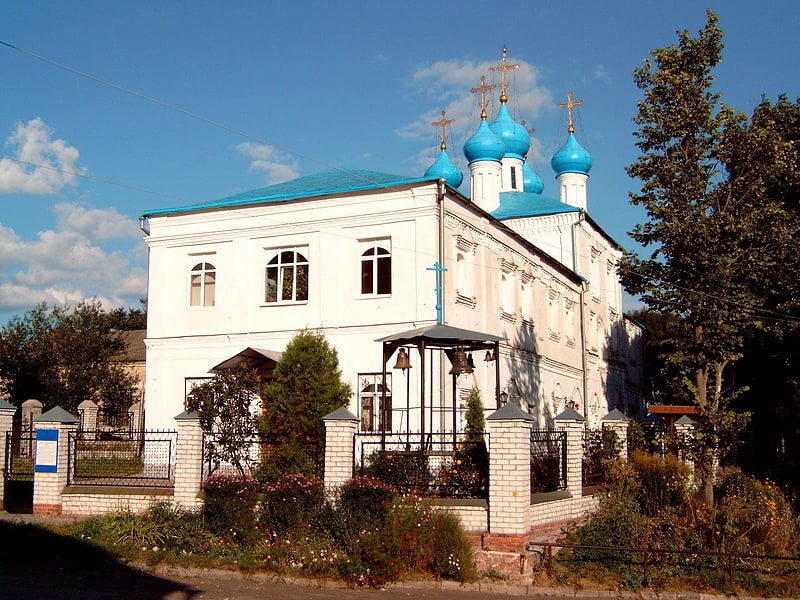
Pokrovsky Cathedral is the oldest preserved temple of the Russian Orthodox Church in Bryansk. It is located in the historic core of the city, on Pokrovskaya Hill.
Address: 2 Покровская улица, Bryansk
Hram Voskresenia Hristova

The Cathedral of the Resurrection of Christ is a cathedral church of the Russian Orthodox Church in the city of Bryansk. Prior to the consecration of the Trinity Cathedral, it served as the cathedral of the Bryansk diocese.
Address: проспект Ленина, 58, Bryansk
Hram Tihvinskoj ikony Boziej Materi
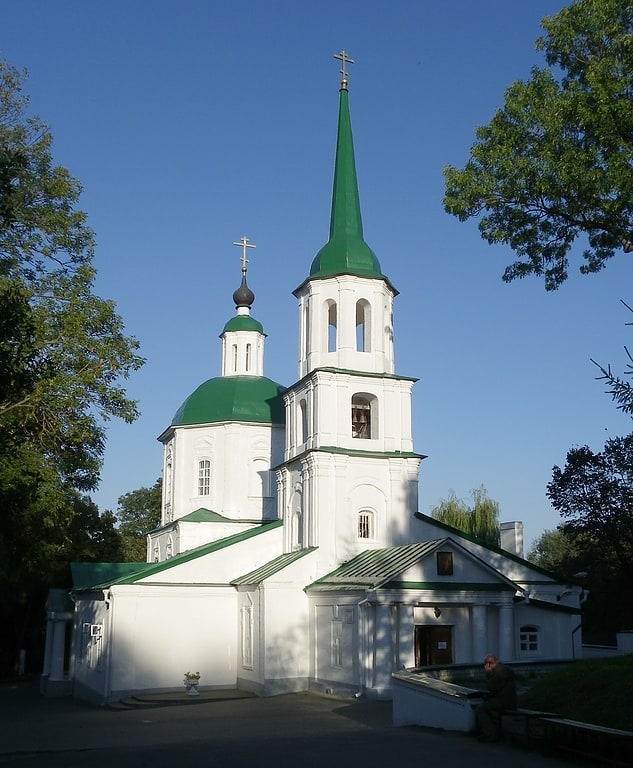
The temple in honor of the Tikhvin Icon of the Mother of God is an active parish church of the Russian Orthodox Church in the city of Bryansk. Located on an elevated site on the northern slope of Petrovskaya Hill, in the historic "New Sloboda" of the city.
Address: Улица Верхняя Лубянка, Bryansk
Kurgan Bessmertia
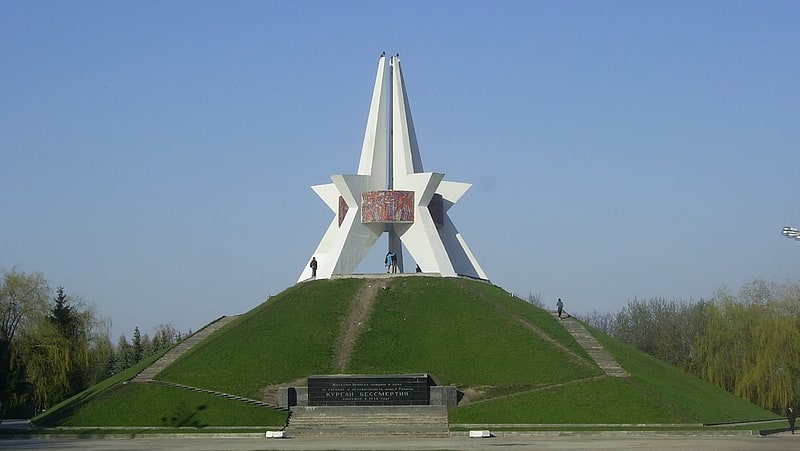
Mound of Bessmerty is a memorial complex to those fallen in the fight against the Nazi invaders, which has become one of the symbols of the city of Bryansk. It is located in the Soviet district of the city, in the Central Park of Culture and Recreation "Nightingales".
It is an artificial earth mound in the form of a pentagonal hill with a total volume of over 20 thousand cubic meters and a height of 12 meters, which is crowned with an 18-meter concrete pylon in the form of a five-pointed star.
Bryansky District
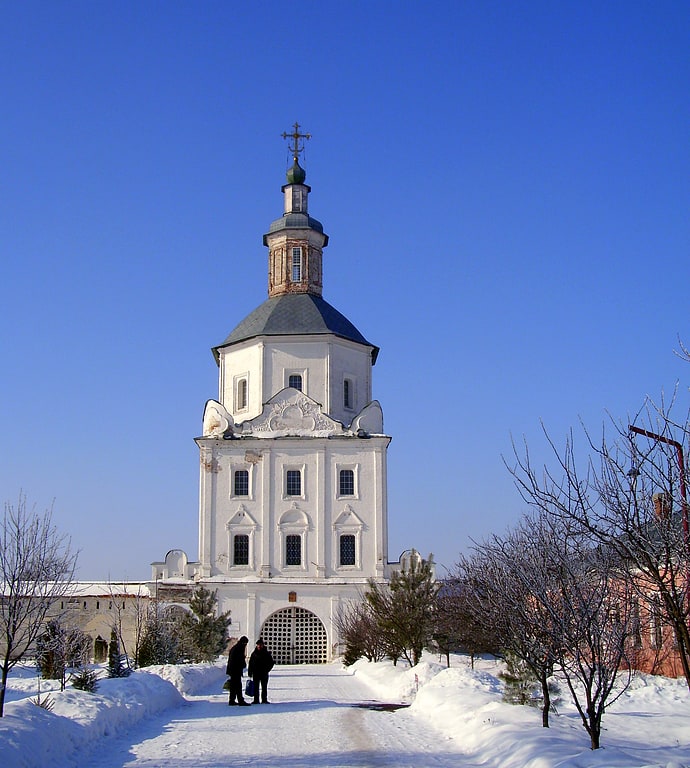
Also known as: Брянский район
Municipality in Russia. Bryansky District is an administrative and municipal district, one of the twenty-seven in Bryansk Oblast, Russia. It is located in the northeast of the oblast. The area of the district is 1,801 square kilometers. Its administrative center is the rural locality of Glinishchevo. Population: 56,496 ; 52,959; 72,530 .[2]